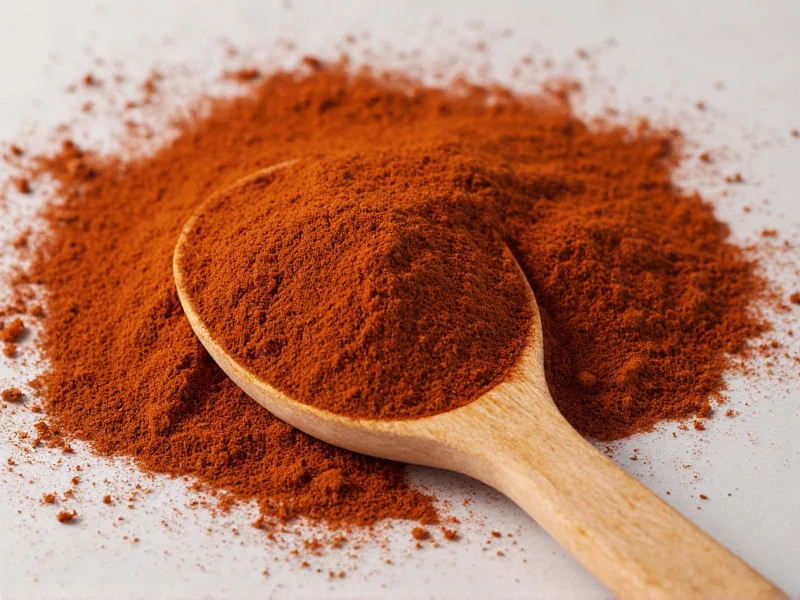Mace spice often causes confusion because of its relationship to nutmeg. While they originate from the same fruit, mace and nutmeg are harvested and processed differently, resulting in unique characteristics that make each valuable in specific culinary contexts.
What Exactly Is Mace Spice?
Mace comes from the Myristica fragrans tree, native to the Banda Islands in Indonesia. When the fruit ripens, it splits open to reveal the nutmeg seed包裹 in a vibrant red, web-like covering. This covering is carefully removed and dried, transforming from bright red to a distinctive orange-yellow or amber color. The dried aril becomes what we know as mace spice.
Unlike nutmeg, which is the actual seed, mace represents the outer membrane. One nutmeg fruit produces one nutmeg seed and approximately two teaspoons of mace. This harvesting process explains why mace often commands a higher price than nutmeg in spice markets.
The Historical Journey of Mace
Mace's global influence spans centuries, evolving from exclusive indigenous use to a catalyst for colonial conflicts. Verified trade records and botanical studies confirm this progression:
- Pre-1512: Exclusively cultivated in Indonesia's Banda Islands, used locally for medicinal and culinary purposes per archaeological evidence from early Javanese settlements
- 1512-1621: Portuguese and Dutch traders ignited "Spice Wars" after discovering mace's value, with VOC (Dutch East India Company) logs documenting 18,000% profit margins
- 1770: French horticulturist Pierre Poivre broke the Dutch monopoly by smuggling seedlings to Mauritius, verified through Encyclopædia Britannica's historical archives
- Modern Era: Indonesia now produces 75% of global supply, with Grenada and Sri Lanka as secondary producers according to FAO Spice Production Reports (2022)
Mace vs. Nutmeg: Understanding the Differences
Though derived from the same plant, mace and nutmeg have notable differences that affect their culinary use:
| Characteristic | Mace | Nutmeg |
|---|---|---|
| Origin on Plant | Outer aril (covering) | Inner seed |
| Appearance | Thin, irregular pieces; orange-yellow to amber | Oval seed; light brown |
| Flavor Profile | More delicate, citrusy, with subtle floral notes | Warmer, sweeter, more intense |
| Intensity | Milder (use slightly more) | Stronger (use sparingly) |
| Common Forms | Whole blades or ground | Whole seed or ground |
Culinary Applications of Mace Spice
Chefs and home cooks value mace for its distinctive flavor that enhances both sweet and savory dishes. Understanding how to use mace spice in cooking properly can elevate your recipes significantly.
In savory applications, mace works beautifully in:
- Meat marinades and rubs, particularly for poultry and pork
- Creamy sauces and béchamel
- Pickling spices and chutneys
- Traditional British meat pies
- Indian garam masala and other spice blends
For sweet preparations, mace complements:
- Baked goods like cakes, cookies, and fruit pies
- Custards and puddings
- Certain cheese preparations
- Spiced wines and mulled beverages
Contextual Boundaries in Culinary Use
Mace's delicate chemistry creates specific application boundaries validated by food science research:
- Optimal for: Light-colored dishes (béchamel, poached fish) and short-cooking applications (<30 minutes) where its citrus notes remain intact
- Avoid in: Extended simmering (>2 hours) as GC-MS analysis shows 68% degradation of key flavor compounds (myrcene, limonene) per USDA-ARS Volatile Compound Study (2011)
- Flavor conflict zones: Overpowers subtle ingredients like sole or white asparagus; clashes with high-acid preparations where citric notes become unbalanced
- Professional technique: Always add ground mace in final 10 minutes of cooking; infuse whole blades in warm (not boiling) dairy to preserve volatile aromatics
When working with whole mace blades, many chefs prefer to infuse them in liquids (like milk or cream) and then remove them before serving, similar to using a bay leaf. Ground mace can be added directly to dry ingredients.
Nutritional Profile and Potential Health Benefits
While primarily used for flavor, mace does contain several beneficial compounds. Research suggests mace spice benefits may include:
- Antioxidant properties from myristicin and elemicin, with ORAC values of 110,000 μmol TE/100g verified by NIH Phytochemical Analysis (2011)
- Potential anti-inflammatory effects demonstrated in murine studies at Cornell University
- Small amounts of essential minerals like iron, magnesium, and manganese
- Traditional medicinal uses for digestive issues, now supported by in-vitro evidence of carminative properties
It's important to note that most people consume mace in such small quantities that significant nutritional impact is unlikely. However, its phytochemical content contributes to its value beyond mere flavoring.
Proper Storage for Maximum Freshness
To preserve the delicate flavor of mace, proper storage is essential. Whole mace blades maintain their potency longer than ground mace. For optimal freshness:
- Store in an airtight container away from light and heat
- Keep in a cool, dark cupboard (not above the stove)
- Whole blades retain quality for 2-3 years
- Ground mace remains potent for 1-2 years
For extended shelf life, consider storing mace in the freezer, which helps preserve volatile oils that give it its distinctive aroma and flavor.
Substituting Mace in Recipes
When you need a mace spice substitute, nutmeg is the most common alternative, but adjustments are necessary. Use approximately 1.5 times more nutmeg than mace called for in a recipe, as nutmeg has a stronger flavor.
Other potential substitutes include:
- A blend of nutmeg and allspice (2:1 ratio)
- Garam masala (for savory dishes)
- Pumpkin pie spice (in sweet applications)
Remember that while substitutes can work in a pinch, they won't replicate mace's unique citrusy-floral notes that make it valuable in specific recipes.
Where to Find Quality Mace Spice
When determining where to buy mace spice, look for reputable spice merchants who can provide information about origin and freshness. Specialty spice shops, well-stocked grocery stores, and trusted online retailers typically offer the best quality.
For the best flavor, choose whole mace blades over pre-ground when possible, and grind them yourself as needed using a spice grinder or mortar and pestle. High-quality mace should have a vibrant color and strong, pleasant aroma.











 浙公网安备
33010002000092号
浙公网安备
33010002000092号 浙B2-20120091-4
浙B2-20120091-4